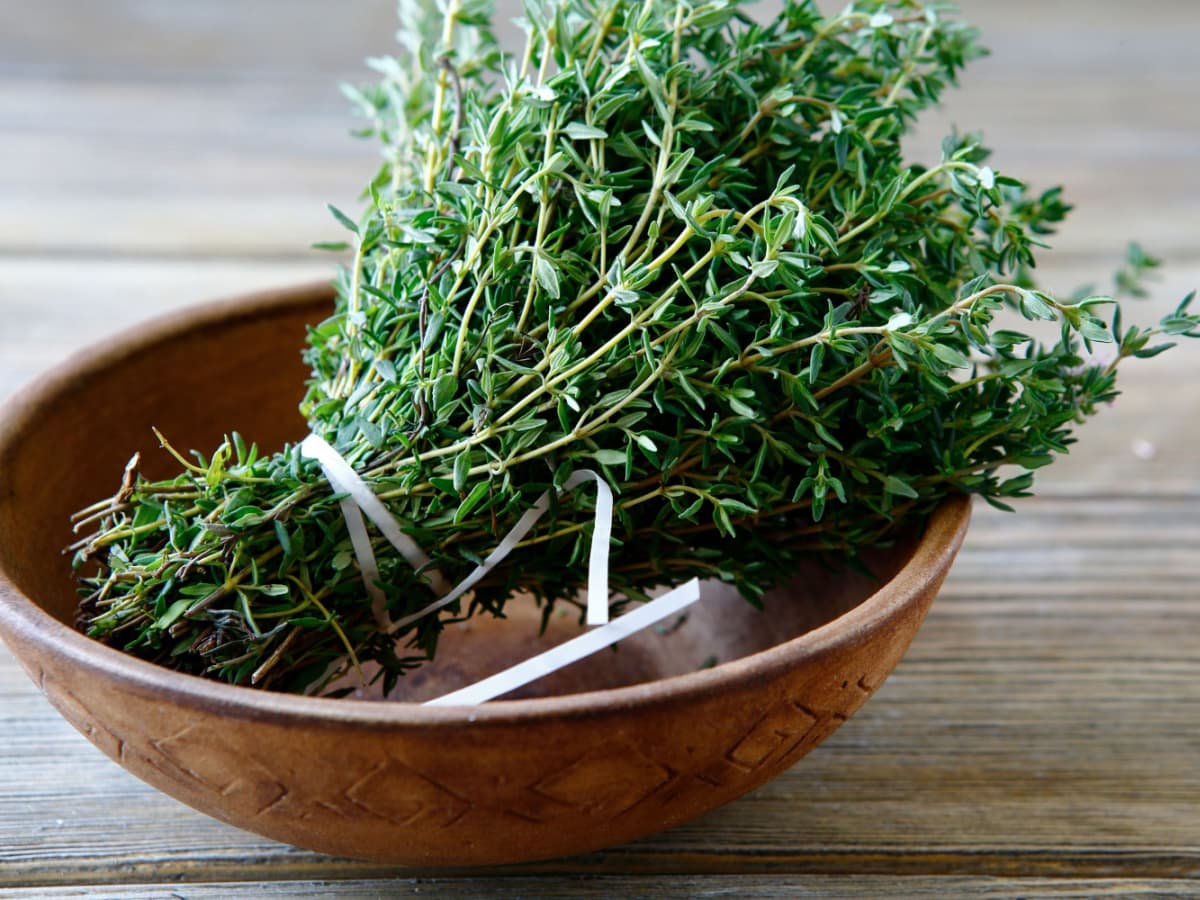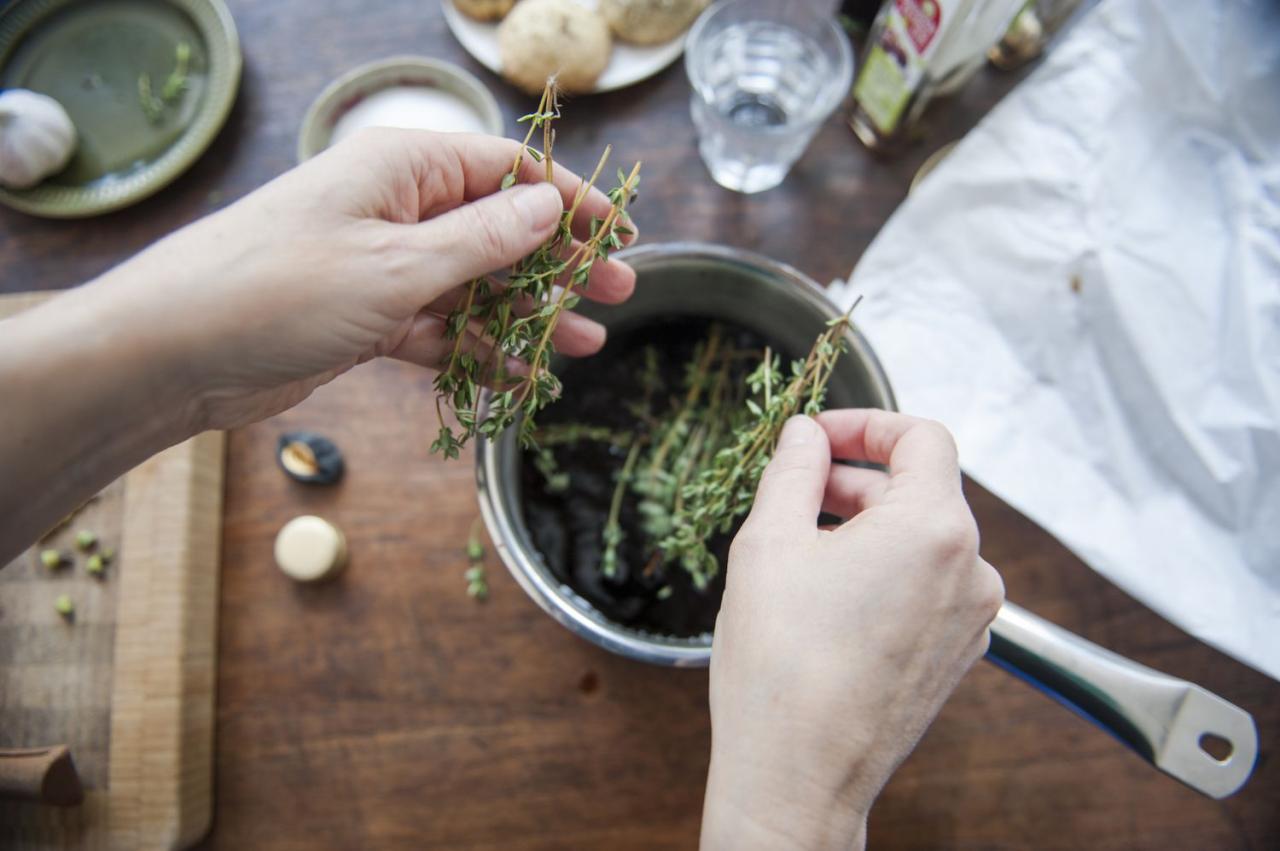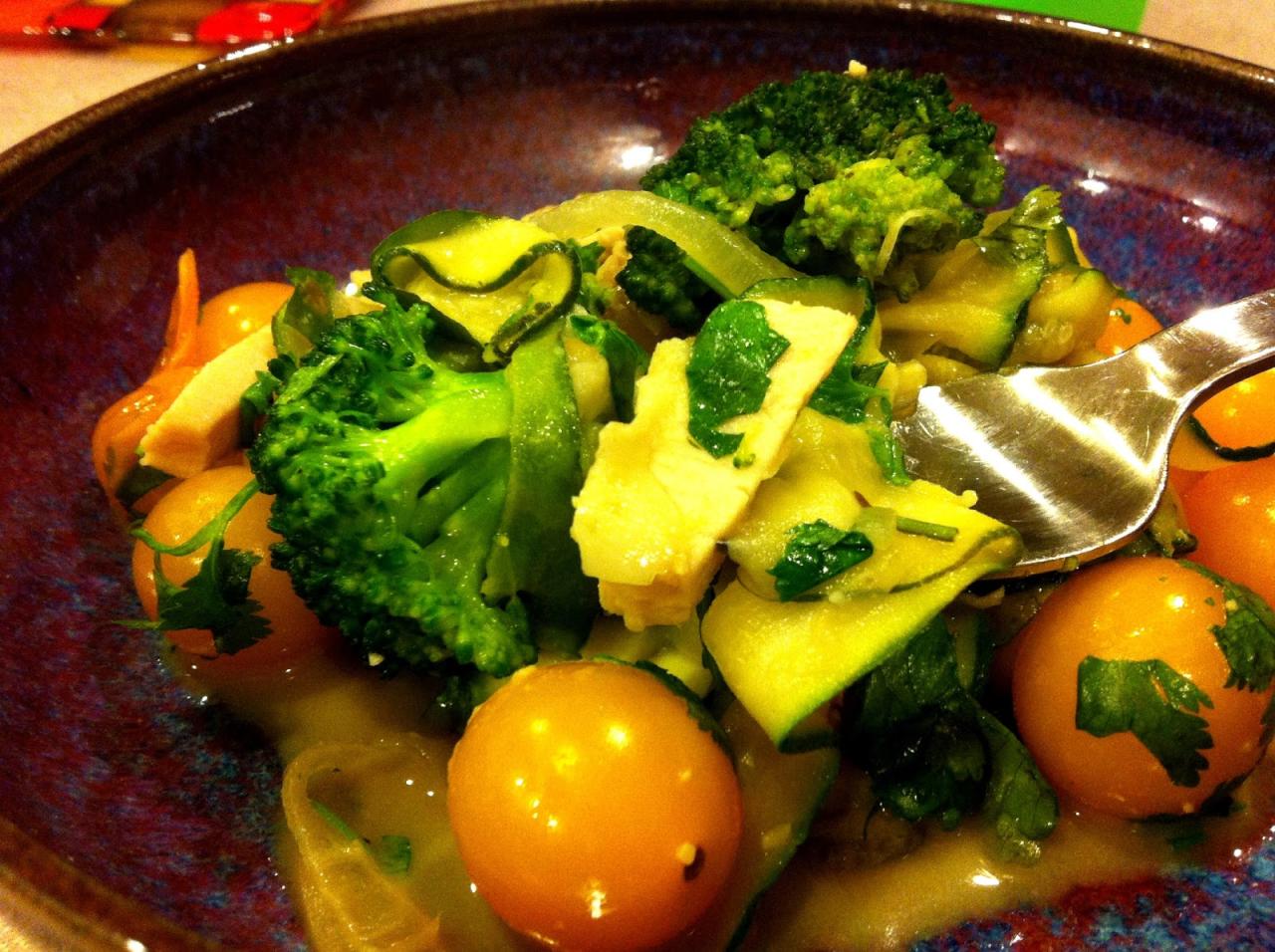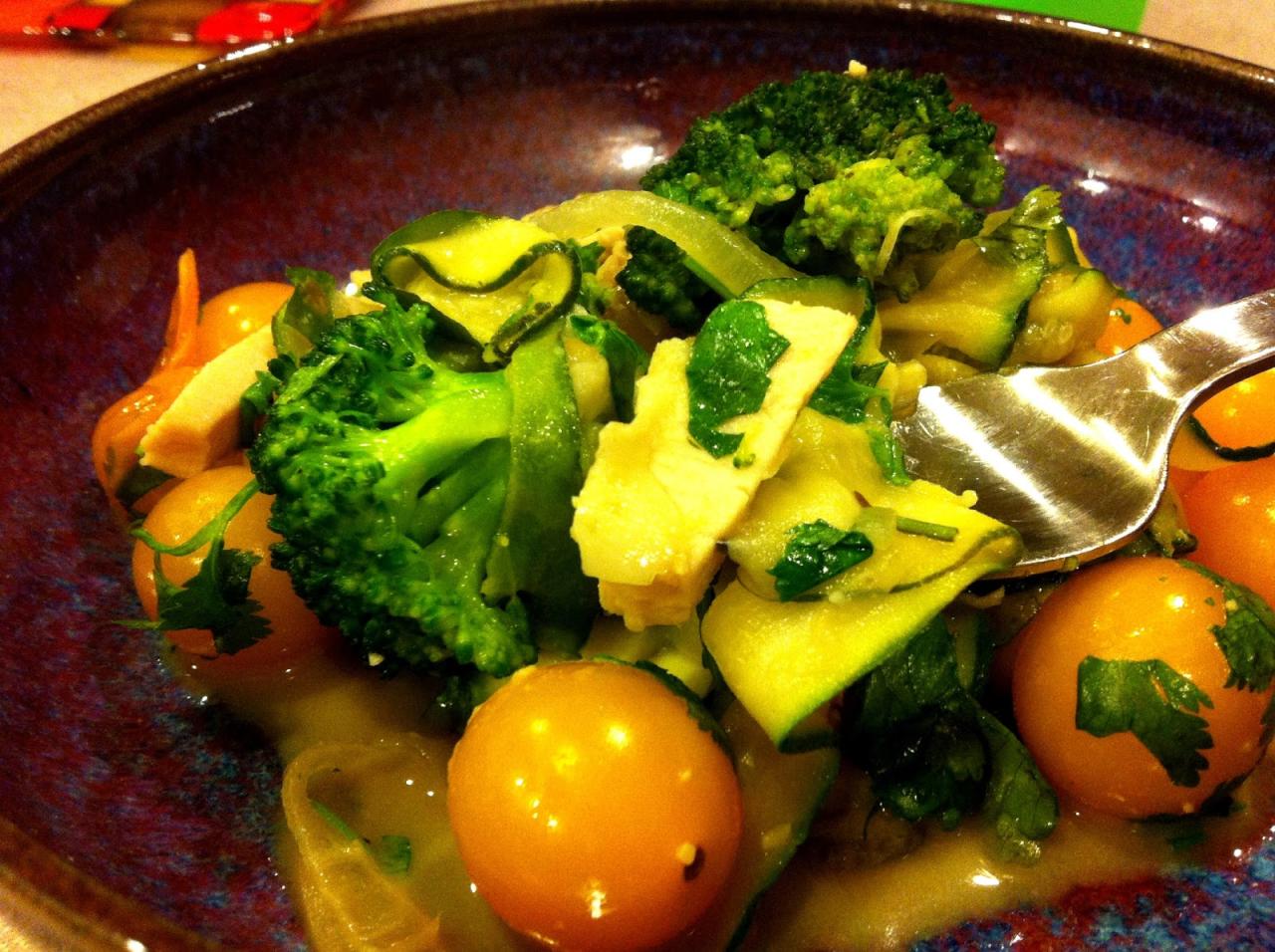How Thyme Piece Can Make Your Meals More Delicious – How Thyme Can Elevate Your Cooking sets the stage for this enthralling narrative, offering readers a glimpse into a story that is rich in detail and brimming with originality from the outset. Thyme, a humble herb with a long and storied history, possesses a unique ability to transform ordinary dishes into culinary masterpieces.
From its origins in ancient civilizations to its modern-day ubiquity, thyme has captivated cooks and diners alike with its versatility and enchanting flavor profile. This article delves into the fascinating world of thyme, exploring its history, culinary applications, and the secrets to unlocking its full flavor potential.
This exploration delves into the history of thyme, examining its diverse varieties and the unique flavors each brings to the table. We’ll navigate the intricacies of choosing and storing fresh and dried thyme, ensuring you have the perfect ingredient for every culinary endeavor.
Thyme: How Thyme Piece Can Make Your Meals More Delicious

Thyme, a member of the mint family, is an aromatic herb that has been used for culinary and medicinal purposes for centuries. Its rich history and versatility make it a true culinary gem.
The History and Origin of Thyme
Thyme’s history dates back to ancient times, with evidence suggesting its use in ancient Egypt, Greece, and Rome. The herb’s name, derived from the Greek word “thymos,” meaning “courage” or “strength,” reflects its traditional association with bravery and vitality. Thyme is believed to have originated in the Mediterranean region, where it thrives in warm, sunny climates.
It was widely cultivated in ancient gardens, not only for its flavor but also for its medicinal properties.
Types of Thyme and Their Distinct Flavors
There are numerous varieties of thyme, each offering unique flavor profiles that can enhance different dishes. Here are some of the most popular types:
- Common Thyme:The most widely used type, common thyme has a classic, earthy, and slightly peppery flavor. It is a versatile herb that complements a wide range of dishes.
- Lemon Thyme:This variety boasts a refreshing citrusy aroma and flavor, making it a perfect addition to seafood, poultry, and salads.
- French Thyme:Known for its strong, pungent flavor, French thyme is often used in stews, soups, and sauces.
- Caraway Thyme:This variety features a unique combination of thyme’s classic flavor with a hint of caraway, adding a distinct note to savory dishes.
- Orange Thyme:As its name suggests, orange thyme has a bright, citrusy flavor that complements desserts, marinades, and fruit-based dishes.
Choosing and Storing Fresh and Dried Thyme
When selecting fresh thyme, look for sprigs with vibrant green leaves and a strong aroma. Avoid sprigs that appear wilted or have brown spots.
- Storing Fresh Thyme:To preserve freshness, store fresh thyme in a plastic bag in the refrigerator for up to a week. You can also freeze fresh thyme by placing it in a freezer-safe bag and storing it for up to 6 months.
- Storing Dried Thyme:Dried thyme can be stored in an airtight container in a cool, dark place for up to a year. It’s important to note that dried thyme is more concentrated than fresh thyme, so use it sparingly.
Culinary Applications of Thyme
Thyme, with its versatility and aromatic qualities, lends itself to a wide range of culinary applications. Its earthy, slightly peppery flavor complements various dishes, enhancing their taste and complexity.
Dishes Where Thyme Shines as a Primary Flavor
Thyme’s distinctive flavor profile makes it a standout ingredient in various dishes. Here are some examples where it takes center stage:
- Roasted Chicken:Thyme’s earthy notes pair beautifully with chicken, creating a classic and comforting dish.
- Herbed Butter:Thyme, combined with other herbs like rosemary and parsley, elevates the simple butter to a fragrant condiment that complements grilled meats and vegetables.
- Roasted Vegetables:Thyme adds depth and complexity to roasted vegetables, especially root vegetables like carrots, potatoes, and parsnips.
- Soups and Stews:Thyme’s warmth and robustness enhance the flavor of hearty soups and stews, creating a comforting and satisfying meal.
Thyme’s Complementarity with Protein Sources
Thyme’s versatility extends to complementing various protein sources.
- Chicken:Thyme’s earthy notes and slight bitterness balance the richness of chicken, enhancing its flavor and creating a harmonious pairing.
- Fish:Thyme, especially lemon thyme, adds a refreshing citrusy twist to fish, complementing its delicate flavor and creating a light and aromatic dish.
- Beef:Thyme’s robust flavor complements the boldness of beef, adding depth and complexity to stews, roasts, and grilled dishes.
- Lamb:Thyme’s earthy notes and slight bitterness complement the richness of lamb, creating a balanced and flavorful dish.
Thyme Pairings with Vegetables
Thyme’s flavor profile pairs well with a wide range of vegetables. Here’s a table showcasing some noteworthy combinations:
Vegetable |
Thyme Pairing |
Flavor Profile |
|---|---|---|
Carrots |
Fresh Thyme |
Earthy and Sweet |
Potatoes |
Thyme Sprigs |
Robust and Earthy |
Asparagus |
Lemon Thyme |
Citrusy and Earthy |
Tomatoes |
Thyme Leaves |
Herbaceous and Savory |
Mushrooms |
Thyme and Garlic |
Umami and Aromatic |
The Flavor Profile of Thyme
Thyme, a versatile herb, brings a unique and complex flavor to dishes. Its aroma and taste are a combination of herbaceous, earthy, and slightly lemony notes. Understanding the flavor profile of thyme is essential for using it effectively in cooking.
The Distinctive Flavors of Thyme
Thyme’s flavor is characterized by a balance of distinct notes. The herbaceous quality provides a fresh, green flavor, reminiscent of other herbs like rosemary and oregano. This is complemented by an earthy note, adding a subtle depth and richness. A hint of lemon adds a bright and refreshing touch, cutting through the other flavors.
Fresh vs. Dried Thyme: A Comparison
The intensity of thyme’s flavor varies significantly between fresh and dried forms. Fresh thyme is generally milder and more nuanced, offering a brighter, more herbaceous flavor. Dried thyme, on the other hand, is more concentrated and potent, providing a stronger earthy and lemony taste.
Using Thyme to Create Complex Flavors, How Thyme Piece Can Make Your Meals More Delicious
Thyme’s versatility allows it to be used in various ways to enhance the flavor profile of dishes. Here are some examples:
- Adding a sprig of fresh thyme to a pot of simmering tomato sauce adds a subtle, earthy depth and a hint of lemony brightness.
- Sprinkling dried thyme over roasted vegetables like carrots or potatoes creates a savory, aromatic crust.
- Infusing thyme into oils or vinegars creates flavorful flavoring agents for marinades and dressings.
The key to using thyme effectively is to consider the intensity of its flavor and adjust the amount accordingly. Fresh thyme is typically used in larger quantities than dried thyme, as its flavor is milder.
Thyme in Different Cooking Methods
Thyme’s versatility shines in various cooking methods, lending its unique aroma and flavor to a wide range of dishes. From the robust flavors of roasting to the delicate notes of simmering, thyme enhances the taste and complexity of your culinary creations.
Thyme in Roasting
Roasting, a dry-heat cooking method, allows thyme’s flavor to infuse deeply into the food. Its woody notes complement hearty meats, poultry, and vegetables. When roasting, thyme can be added directly to the dish, incorporated into a marinade, or used as a rub.
For instance, a simple rub of thyme, salt, and pepper elevates the flavor of roasted chicken or lamb. Thyme also pairs well with root vegetables like carrots, potatoes, and parsnips, adding depth to their sweetness.
Thyme in Grilling
Grilling, another dry-heat cooking method, brings out the smoky and savory notes of thyme. It’s an excellent addition to marinades for grilled meats, poultry, and seafood. A marinade combining thyme, garlic, olive oil, and lemon juice infuses grilled chicken or fish with a vibrant, herbaceous flavor.
Thyme also enhances the taste of grilled vegetables like zucchini, peppers, and onions.
Thyme in Sautéing
Sautéing, a quick cooking method using a small amount of fat, allows thyme’s delicate flavor to shine through. It’s commonly used in stir-fries, where thyme adds a touch of freshness to the dish. Sautéed mushrooms with thyme and garlic create a simple yet delicious side dish.
Thyme also complements sautéed vegetables like asparagus, spinach, and broccoli.
Thyme in Simmering
Simmering, a gentle cooking method in liquid, allows thyme’s flavor to infuse into soups, stews, and sauces. It adds depth and complexity to the dish, enhancing the flavors of other ingredients. Thyme is a staple in French onion soup, adding a subtle, earthy note to the caramelized onions and broth.
It also complements hearty stews like beef stew and chicken stew, providing a comforting aroma and taste.
Incorporating Thyme into Marinades, Sauces, and Rubs
Thyme is a versatile herb that can be incorporated into various culinary applications. Here are some tips for incorporating thyme into marinades, sauces, and rubs:
- Marinades:Thyme can be combined with other herbs, spices, and acidic ingredients like lemon juice or vinegar to create flavorful marinades for meats, poultry, and seafood.
- Sauces:Thyme can be added to sauces during the cooking process or used as a garnish. It complements both creamy and savory sauces, adding depth and complexity to the flavor profile.
- Rubs:Thyme can be combined with salt, pepper, and other spices to create flavorful rubs for meats, poultry, and vegetables. Rubs allow the flavor of thyme to penetrate the food during cooking, creating a delicious crust.
Thyme-Infused Recipes for Different Cooking Techniques
Cooking Technique |
Thyme-Infused Recipes |
|---|---|
Roasting |
Roasted Chicken with Thyme and Lemon, Roasted Lamb with Thyme and Garlic, Roasted Root Vegetables with Thyme |
Grilling |
Grilled Chicken with Thyme and Rosemary, Grilled Salmon with Thyme and Lemon, Grilled Vegetables with Thyme and Garlic |
Sautéing |
Sautéed Mushrooms with Thyme and Garlic, Sautéed Spinach with Thyme and Lemon, Sautéed Asparagus with Thyme and Parmesan |
Simmering |
French Onion Soup, Beef Stew with Thyme and Carrots, Chicken Stew with Thyme and Potatoes |
Thyme for Enhanced Flavor

Thyme’s versatility extends beyond its aroma, offering a depth of flavor that can transform even the simplest dishes. Whether you’re crafting a hearty soup, simmering a rich stew, or adding a final flourish to a delicate sauce, thyme’s earthy notes and subtle sweetness can elevate the taste to new heights.
Thyme, with its earthy and slightly citrusy flavor, can elevate the taste of countless dishes. While it’s commonly used in savory dishes, its versatility extends to desserts as well. For those seeking a more potent herbal experience, consider exploring Biota Herb: The Herbal Remedy Everyone’s Talking About , a plant with a long history of medicinal uses.
However, when it comes to enhancing your meals, thyme remains a culinary hero, adding depth and complexity to your creations.
Thyme in Soups, Stews, and Sauces
Thyme’s robust flavor complements the richness of soups, stews, and sauces. It adds a layer of complexity that balances the other ingredients and enhances the overall taste profile. * Soups:Thyme pairs well with hearty vegetable soups, such as lentil soup, minestrone, or tomato soup.
Its earthy notes complement the sweetness of vegetables and add a warm, comforting flavor.
Stews
In stews, thyme blends seamlessly with the rich flavors of meats, vegetables, and herbs. It enhances the savory depth of beef stews, lamb stews, and chicken stews.
Sauces
Thyme can be used to create flavorful sauces that complement a variety of dishes. It’s a classic ingredient in pan sauces, where it adds a depth of flavor to the juices released from cooking meat. Thyme can also be used to create a simple herb sauce, which can be drizzled over roasted vegetables or grilled fish.
Thyme in Breads, Pastries, and Desserts
While often associated with savory dishes, thyme’s subtle sweetness and earthy notes can add a unique twist to breads, pastries, and desserts.* Breads:Thyme can be incorporated into bread dough, adding a subtle savory flavor and a hint of complexity. It pairs well with whole wheat breads, focaccia, and rustic loaves.
Pastries
Thyme’s peppery flavor can elevate even the simplest dish, but its impact extends beyond our taste buds. Understanding the intricate relationships in the natural world, like the crucial role spiky seeds play in biodiversity, as explained in this fascinating article Why Spiky Seeds Are Critical for Biodiversity and Ecosystem Health , helps us appreciate the delicate balance that sustains life.
Just as spiky seeds ensure the survival of plants, thyme’s robust flavor ensures the continued enjoyment of culinary creations.
Thyme can be used in both sweet and savory pastries. It complements the buttery flavors of croissants and pastries, adding a touch of earthiness. It can also be used in savory pastries like quiche and savory tarts.
Desserts
Thyme can add a unique flavor twist to desserts. It can be used in fruit pies, crumbles, and cakes, where it complements the sweetness of fruits and adds a touch of savory complexity.
Recipe for Thyme-Infused Honey Cake:Ingredients:* 1 cup (2 sticks) unsalted butter, softened
- 1 1/2 cups granulated sugar
- 3 large eggs
- 1/2 cup honey
- 1 teaspoon vanilla extract
- 1/4 cup fresh thyme leaves, chopped
- 2 1/4 cups all-purpose flour
- 1 teaspoon baking soda
- 1/2 teaspoon salt
Instructions:
- Preheat oven to 350 degrees F (175 degrees C). Grease and flour a 9×13 inch baking pan.
- In a large bowl, cream together the butter and sugar until light and fluffy. Beat in the eggs one at a time, then stir in the honey and vanilla extract.
- In a separate bowl, whisk together the flour, baking soda, and salt. Gradually add the dry ingredients to the wet ingredients, mixing until just combined. Stir in the chopped thyme leaves.
- Pour the batter into the prepared baking pan and bake for 30-35 minutes, or until a toothpick inserted into the center comes out clean.
- Let the cake cool completely in the pan before frosting or serving.
Thyme for Health and Wellness
Beyond its culinary versatility, thyme offers a range of potential health benefits, making it a valuable addition to a well-rounded diet. Its potent antioxidant and antimicrobial properties have been recognized for centuries, contributing to its use in traditional medicine and modern health practices.
Thyme’s Health Benefits
Thyme’s potential health benefits are attributed to its rich concentration of antioxidants and bioactive compounds, such as thymol, carvacrol, and flavonoids. These compounds contribute to its anti-inflammatory, antibacterial, antifungal, and antiviral properties.
- Antioxidant Properties:Thyme’s high antioxidant content helps combat oxidative stress, which can damage cells and contribute to chronic diseases. Studies suggest that thyme consumption may help protect against heart disease, cancer, and neurodegenerative disorders.
- Antimicrobial Properties:Thyme has been traditionally used to treat infections due to its potent antimicrobial properties. Thymol and carvacrol, the primary active compounds in thyme, exhibit strong antibacterial and antifungal activity against a wide range of pathogens.
- Respiratory Health:Thyme is commonly used to alleviate respiratory ailments like coughs, colds, and bronchitis. Its expectorant properties help loosen mucus and promote its removal, while its antimicrobial properties can combat respiratory infections.
- Digestive Health:Thyme has been used to support digestive health due to its carminative properties, which help reduce bloating and gas. Its antimicrobial activity may also contribute to the treatment of digestive infections.
- Immune Support:Thyme’s antioxidant and antimicrobial properties can bolster the immune system by protecting against infections and reducing inflammation.
Thyme in Traditional Medicine
Thyme has a long history of use in traditional medicine systems worldwide. Its medicinal properties have been recognized for centuries, and it has been employed for various purposes, including:
- Antiseptic and Wound Healing:Thyme’s antimicrobial properties have been utilized for wound healing and preventing infections. Its essential oil can be applied topically to wounds and skin infections.
- Respiratory Ailments:Thyme has been traditionally used to treat respiratory ailments like coughs, colds, bronchitis, and asthma. Its expectorant properties help loosen mucus, while its antimicrobial activity combats infections.
- Digestive Disorders:Thyme has been used to relieve digestive discomfort, such as bloating, gas, and indigestion. Its carminative properties help reduce gas formation, while its antimicrobial activity may combat digestive infections.
- Anxiety and Stress:Some traditional practices suggest that thyme may have calming effects and can help alleviate anxiety and stress.
Thyme’s Antimicrobial Properties
Thyme’s antimicrobial properties are primarily attributed to its active compounds, thymol and carvacrol. These compounds have demonstrated potent antibacterial, antifungal, and antiviral activity against a wide range of pathogens.
- Antibacterial Activity:Thymol and carvacrol have been shown to be effective against both Gram-positive and Gram-negative bacteria, including Staphylococcus aureus, Escherichia coli, and Salmonella.
- Antifungal Activity:Thyme’s active compounds have demonstrated antifungal activity against various fungal species, including Candida albicansand Aspergillus niger.
- Antiviral Activity:Studies have shown that thyme extracts can inhibit the replication of certain viruses, including herpes simplex virus and influenza virus.
Thyme’s Nutritional Content
Thyme is a rich source of essential nutrients, including vitamins, minerals, and antioxidants. Its nutritional profile contributes to its overall health benefits.
Illustration:A visual representation of thyme’s nutritional content could be a pie chart or a bar graph. The pie chart would show the proportions of different nutrients, such as vitamin C, vitamin K, iron, manganese, and fiber. The bar graph would illustrate the relative amounts of these nutrients in thyme compared to other herbs or vegetables.
Conclusive Thoughts

As we conclude our journey through the world of thyme, it becomes evident that this herb is more than just a culinary staple; it’s a versatile ingredient capable of elevating dishes to new heights of flavor and complexity. Whether you’re a seasoned chef or a home cook seeking to enhance your culinary repertoire, thyme offers a world of possibilities.
Embrace the power of this culinary gem, and let its fragrant aroma and delightful taste transform your cooking into an unforgettable experience.
Questions Often Asked
What is the best way to use fresh thyme?
Fresh thyme is best used whole or chopped, added towards the end of cooking to preserve its delicate flavor.
Can I substitute dried thyme for fresh thyme?
Yes, but remember that dried thyme is more concentrated, so use about 1/3 the amount of fresh thyme in a recipe.
How long can I store fresh thyme?
Fresh thyme can be stored in the refrigerator for up to a week, wrapped in a damp paper towel.
What are some alternative herbs to use if I don’t have thyme?
Other herbs that can be used as substitutes for thyme include rosemary, oregano, marjoram, and sage.
